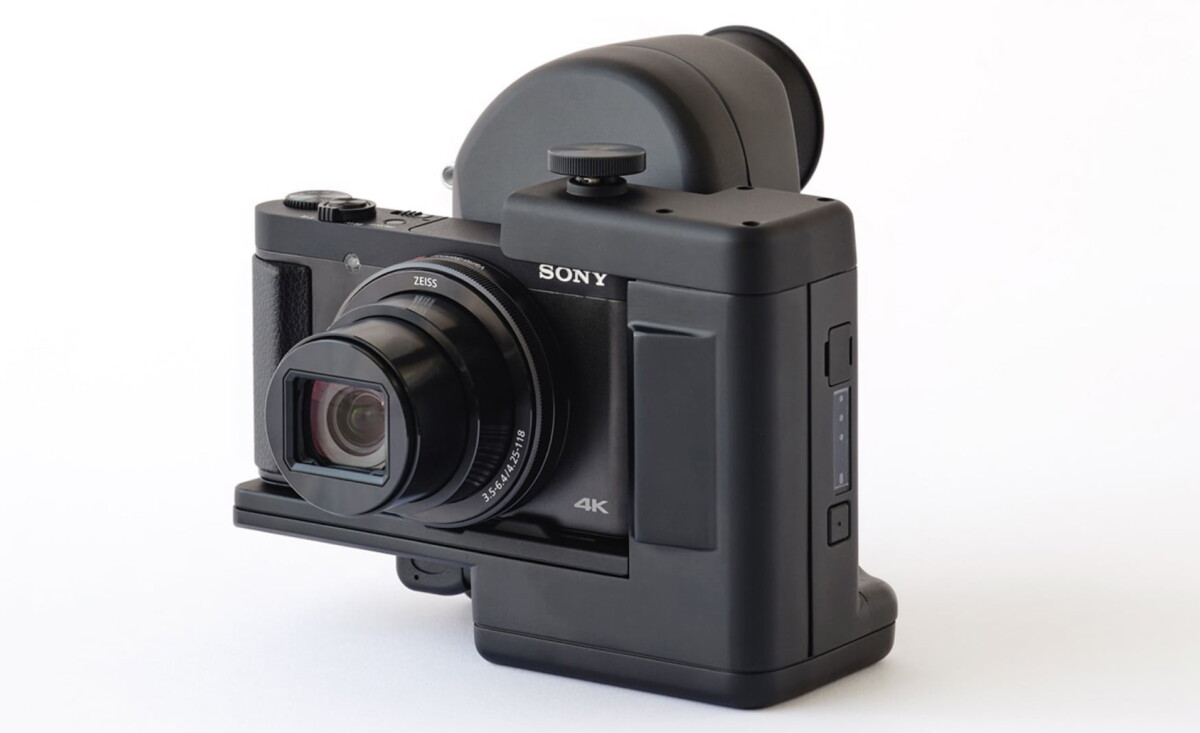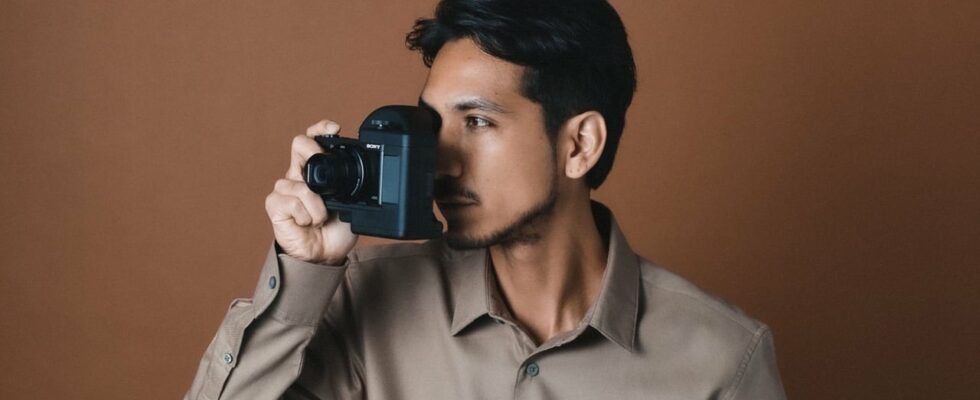Japanese companies Sony and QD Laser announced on Monday March 13 a new camera kit for the visually impaired. Combining an old compact 30x zoom model with an electronic viewfinder equipped with latest generation lasers, the DSC-HX99 RNV projects the image directly onto the user’s retina. A first on the market.
Sony is committed to helping the visually impaired. On Monday March 13, the Japanese manufacturer announced the DSC-HX99 RNV, a new compact camera… or almost. However, this new product is not intended to replace the brand’s very popular RX100: composed of an old camera from 2018 and a state-of-the-art laser electronic viewfinder, this duo should allow people with vision problems to make photography.
This device was developed as part of the project “ With my eyes” from Sony, created in 2020 in partnership with the Japanese brand of laser semiconductors QD Laser, recalls the information site Engadget.
Project the image directly onto the retina
As a reminder, visual impairment is different from blindness: people who suffer from it see, but in a limited way. This therefore implies daily difficulties in reading or writing, finding one’s bearings in space or moving around. The most common cases are related to errors in light refraction or cataracts.
It is therefore to circumvent these problems that the DSC-HX99 RNV was developed. Although this product has just been released, half of its components are 5 years old. This kit first consists of a Sony Cybershot DSC-HX99 released in 2018. This device has a 1/2.3″ photo sensor with 18 megapixel definition, integrated image stabilization and a lens whose focal length ranges from 24 mm to 720 mm (x28). One of the smallest compact travel zoom models in the world at the time of its release, according to the specialized media Digital Photography Review .

The novelty is rather in the electronic viewfinder which equips the product: the Retissa Neoviewer, developed by QD Laser. This tool uses a technology called “retinal laser projection“. Concretely, the light captured by the sensor of the camera is diffused directly on the retina of the user via tiny lasers which cross his eye. Thisview finderthus circumvents the difficulties of the eyes of visually impaired people by doing the work for them.
See better every day… in 720p
If this technology has already existed for several years, it is the “first time in the worldthat it is put into practice in a consumer product, according to QD Laser CEO Mitsuru Sugawara. Thanks to this new generation electronic viewfinder, all camera functions become accessible to the visually impaired, from autofocus to burst mode. Above all, the DSC-HX99 RNV allows people with low vision to observe their surroundings on a daily basis, even without trying to photograph. And even from afar, thanks to the HX99’s x28 zoom.
All is not perfect, however. Sony recognizes that the proper functioning of the product will depend on the type of visual impairment of the users. Similarly, the definition transmitted by the Retissa Neoviewer remains limited to 720p and its battery, to be charged separately from the camera, only lasts approximately 4 hours according to the manufacturer’s website. A problem if you want to use the kit for your daily sight.
State-of-the-art technology that remains accessible
But Sony has the merit of marketing the DSC-HX99 RNV at a price that remains accessible, absorbing most of the production costs: the kit will be released in early summer 2023 in the United States and will be sold for 600 dollars, against around $500 for the HX99 alone. Good news, especially for cutting-edge technology that isn’t meant to be sold on a large scale.
Want to join a community of enthusiasts? Our Discord welcomes you, it’s a place of mutual aid and passion around tech.
